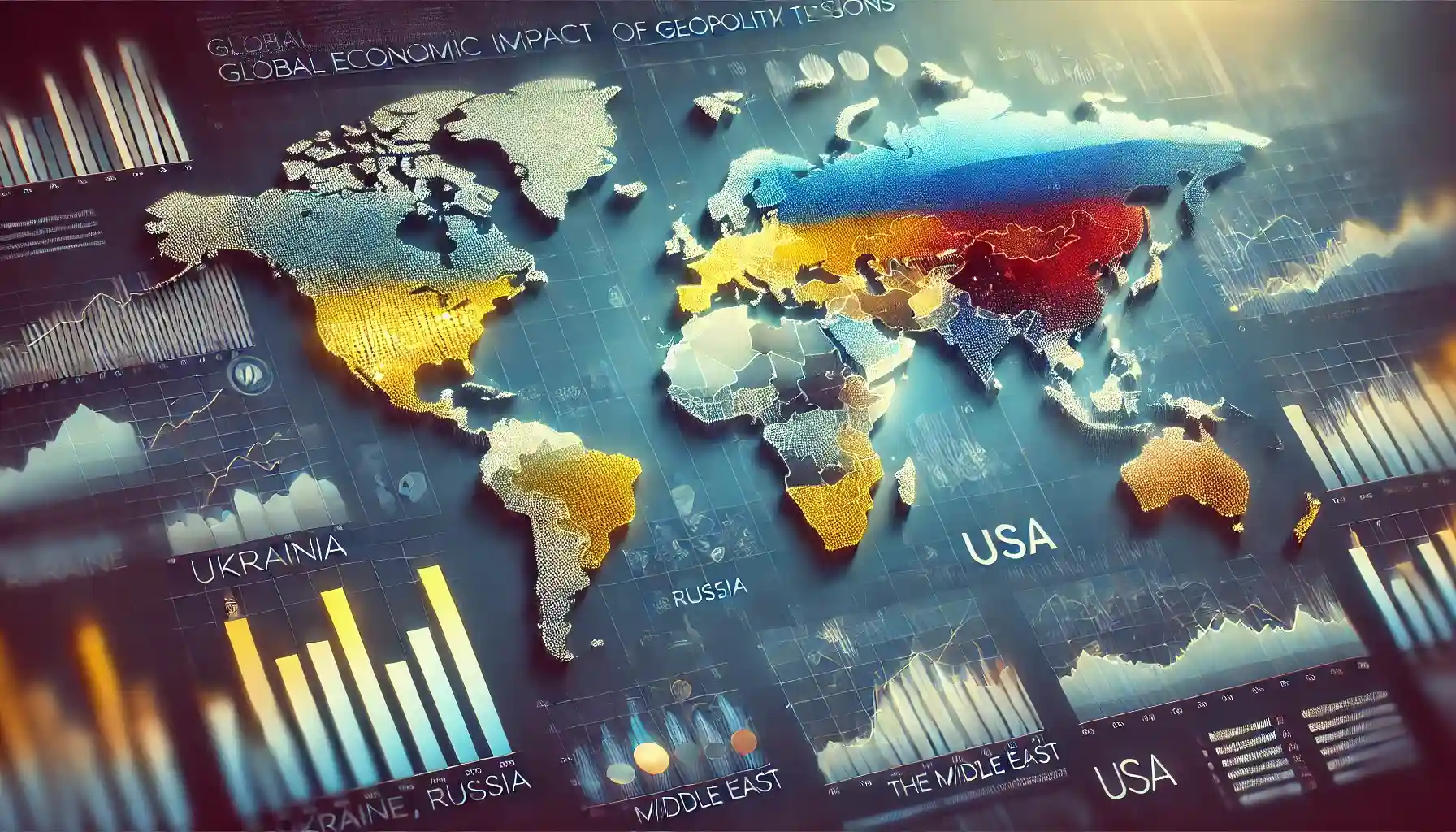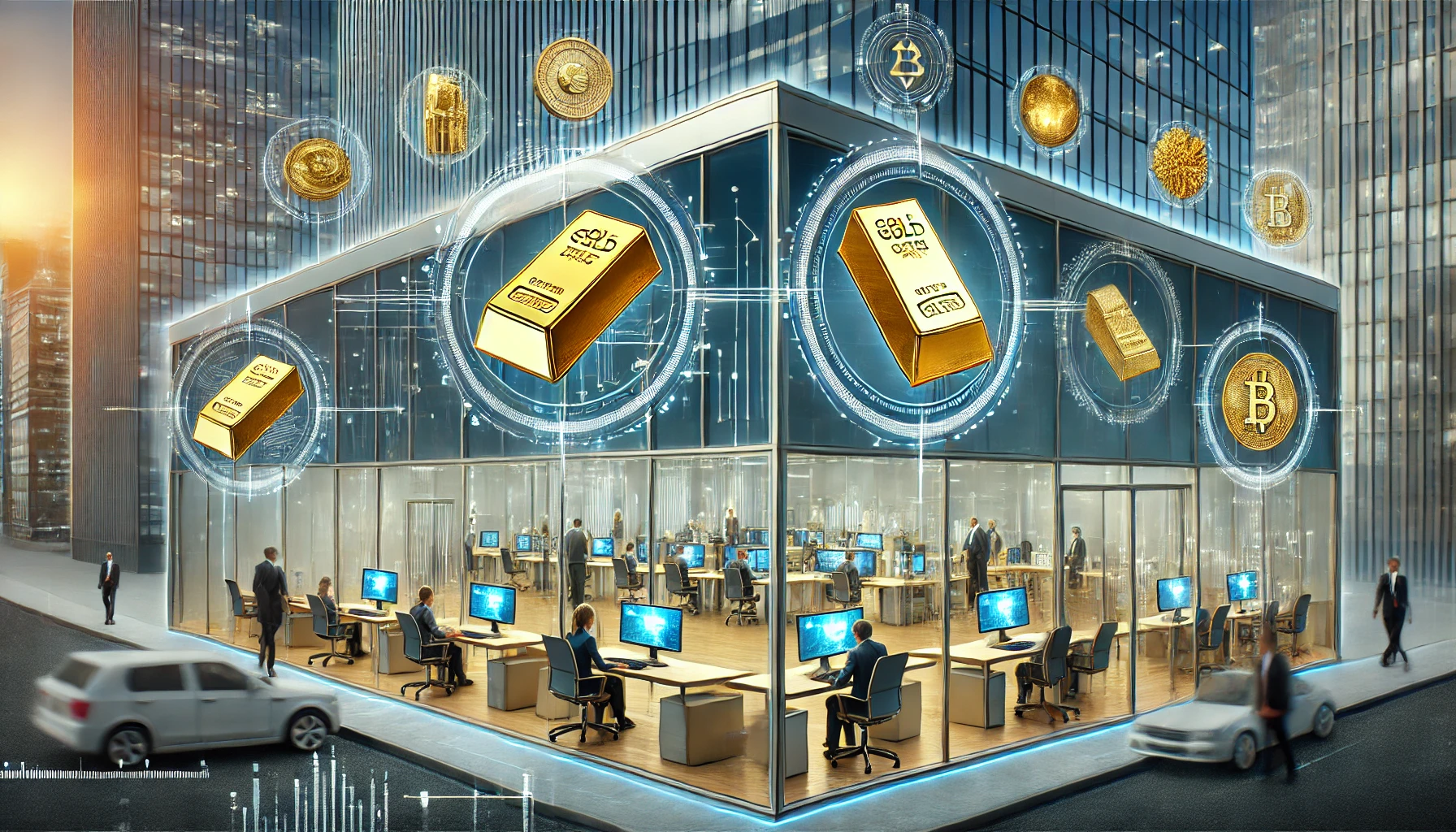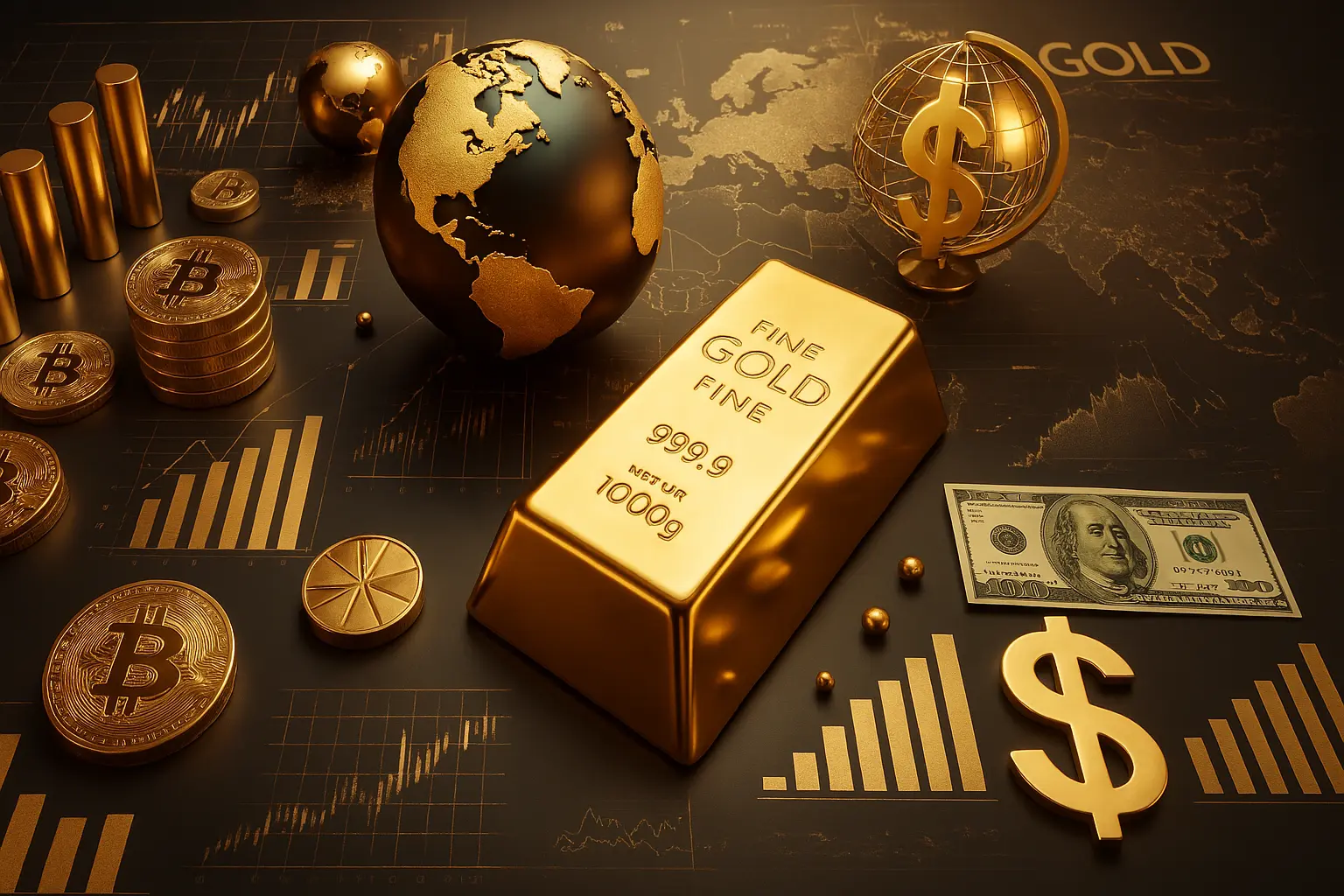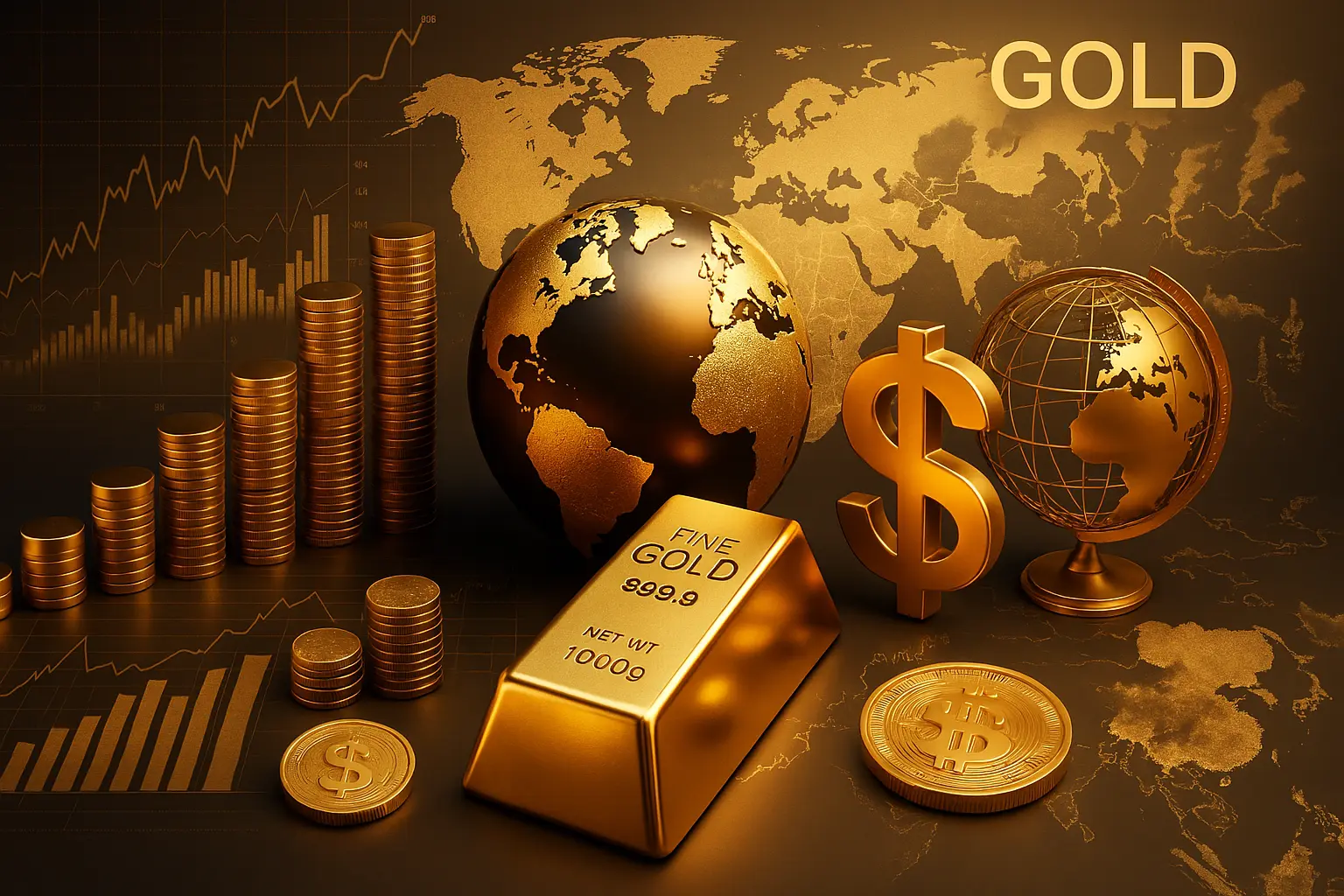Table of contents
Gold Price News: Stability amid tensions between US government formation and geopolitical crises
Dr. Mathias Kunze
Senior Consultant in Commercial and Tax Law
7 min.
Published on: 02.12.2024 | 23:48 UTC

Today's gold price and important market developments from 02.12.2024 in the live ticker
Source: ChatGPT (OpenAI)
Gold price consolidates: Sideways movement dominates the market
The gold price is trading at USD 2,643 per troy ounce today, almost unchanged compared to the last trading day. The continued sideways movement indicates a balance between supply and demand, with market participants obviously waiting for decisive impulses. Despite the stable level, the precious metal remains trapped in a narrow price range.
This stability reflects a phase of relative calm, which is visible in both the physical and paper markets. While investors wait for clear signals from geopolitical developments and macroeconomic data, the gold price remains a gauge of uncertainty in the global markets.
The sideways movement that has persisted for several days could be interpreted both as preparation for a breakout into a new trading range and as a temporary consolidation before a renewed downward or upward movement. However, the limited price movements indicate that neither sellers nor buyers can currently gain the upper hand.
Ukraine: Scholz visit and new escalations
German Chancellor Olaf Scholz's visit to Kiev marks another milestone in European support for Ukraine. With a new arms package worth 650 million euros, Germany is once again signaling its determination to strengthen Ukraine in its defence campaign against Russia. However, Scholz's trip also has domestic political dimensions: Critics accuse him of using it specifically to raise his profile ahead of the upcoming vote of confidence in the Bundestag. In addition to military aid, possible diplomatic approaches were also discussed, which is a difficult undertaking given the current escalations.
The military situation in Ukraine remains extremely tense. During the night, Russian troops attacked various targets with 110 drones, again causing serious damage and civilian casualties. Of particular concern is the capture of large parts of the eastern Ukrainian city of Kurakhove by Russian forces, who were able to gain a strategic advantage there. This shows how difficult it is for the Ukrainian armed forces to halt the Russian advance.
A global dimension to the war is also emerging: the deployment of around 10,000 North Korean soldiers alongside Russia illustrates the growing internationalization of the conflict. During a visit to Beijing, Foreign Minister Annalena Baerbock urgently warned of the geopolitical risks that such a development entails. The deployment of these troops underscores Russia's deep-rooted ties with non-Western allies.
Another pressing problem is the increasing number of desertions within the Ukrainian armed forces. According to reports, 60,000 soldiers have already refused to serve or attempted to leave the country this year. This not only weakens the military's ability to defend itself, but also puts a considerable strain on the morale of the troops. As a result, the Ukrainian leadership is facing a further strategic challenge.
Syria: Rebel successes in Aleppo and impending humanitarian catastrophe
In Syria, Islamist rebels have made significant territorial gains in a surprising offensive. The megacity of Aleppo - a central symbol of the Assad regime - has largely fallen into the hands of the opposition forces. Experts see this as a clear sign of the increasing weakness of the troops loyal to Assad, who appear barely able to act without the support of Russia and Iran. While Russian fighter jets flew attacks on Aleppo again for the first time after a break of several years, Iran's support remains limited in view of its own crises in the region.
The European Union is alarmed by the humanitarian consequences of this escalation. Reports of rising numbers of victims and massive displacement illustrate the dramatic nature of the situation. The European Union is warning of a renewed increase in the number of refugees, which could further strain the already strained capacities in neighboring countries and Europe. The international community faces the challenge of responding appropriately to the renewed fighting in a conflict that has been unresolved for years.
Middle East conflict: Fragile ceasefire and ongoing tensions
A fragile ceasefire between Israel and Hezbollah continues to shape the situation in the Middle East. Although the agreement is being celebrated as a success, the situation remains tense. Hezbollah, whose leader Naim Kassem describes the agreement as a “great victory”, sees the ceasefire as a strategic and position-strengthening success. At the same time, there are reports of ongoing military activity. Israel has carried out airstrikes on suspected Hezbollah positions in southern Lebanon to prevent further rocket attacks.
Meanwhile, violence is escalating again in the Gaza Strip. According to reports, numerous Palestinians were killed in night-time attacks by the Israeli army. Meanwhile, attacks on Israeli buses and increasing violence between settlers and the Palestinian population are on the rise in the West Bank. The situation remains tense as no sustainable solutions are in sight.
Pope Francis called for an extension of the ceasefire and more intensive humanitarian support for the affected regions. He emphasized the need to open up prospects for peace and stability for all parties to the conflict, but also warned against a worsening of the humanitarian catastrophe in the entire region.
Russia's acid test: Economic and military fronts
Russia continues to face enormous challenges on several fronts. The economic situation is being exacerbated by the continuing decline of the rouble and galloping inflation, which is driving up the prices of basic foodstuffs and consumer goods. The central bank's key interest rate is already at 21% and could rise further in order to curb price increases. At the same time, conscripts are being offered a debt cut in order to secure troop numbers - a clear sign of the Russian army's ongoing personnel problems.
The military escalation is also reflected in the intensive drone war. Russian attacks continue to hit critical infrastructure in Ukraine, while Ukrainian forces respond with targeted drone attacks on Russian territory. Most recently, several Russian industrial facilities were damaged, further exacerbating tensions.
In terms of human rights, the situation in Russia remains tense. The lawyer Dmitry Talantov was sentenced to seven years in prison after publicly criticizing the conduct of the war. The case highlights the increasing repression of critical voices and state control over dissenting opinions. International human rights organizations strongly condemn the sentence.
The challenges for Moscow are becoming ever greater as both domestic political pressure and the burdens of war increase. Observers see these developments as a symptom of a system that is overstretched on several fronts.
Technical analysis: Discrepancy between volatility and sideways movement
The gold price continues to be influenced by several short-term and long-term factors that determine its price movements. Gold is currently trading at USD 2,643 per troy ounce and is showing signs of consolidation after the last few trading days.
One major factor that could influence the market in the coming days is the increasing uncertainty at a global level. While the formation of the Trump administration in the US has led to a current consolidation and thus sideways movement of the gold price, the current emerging geopolitical tensions could contribute to potential volatility in the gold price. This uncertainty could lead to the gold price moving out of the current sideways movement and possibly testing support at USD 2,620 or targeting a level of USD 2,666 if the market calms down.
The technical chart analysis shows that the movement remains within the established trading ranges. However, market sentiment could quickly change as a result of external events. Technical indicators such as the Moving Average Convergence Divergence (MACD) and the Relative Strength Index (RSI) point to a neutral to slightly bearish sentiment. The MACD is close to the zero line, which indicates indecisive market sentiment. In contrast, the RSI is trending slightly below 50, indicating possible selling pressure.
Outlook: Gold price caught between uncertainty and potential pressure
Over the next few days, the gold price is likely to continue to be caught between geopolitical events and the formation of the new Trump administration in the US. While geopolitical events would actually drive the gold price, Trump's election victory and the associated strengthening of the US dollar are putting the gold price under strong pressure. However, if geopolitical tensions escalate unexpectedly, this could drive investors back into gold in the short term.
The market will also be influenced by the next interest rate decisions. Should the US Federal Reserve send signals for a more restrictive policy, this could put additional pressure on gold. On the other hand, signs of a slowdown in the global economy - particularly in Europe or China - could increase demand for gold again.
Seasonal effects also play an important role: Traditionally, the gold price is stable or rises slightly in December, as many investors end the year with conservative shifts into safe asset classes.
Ultimately, the short-term outlook remains fragile: the market is balancing between downward pressure and the possibility of a moderate rebound should a geopolitical event or weaker US data trigger a renewed flight to safe investments. Investors should be prepared for increased volatility, which could be triggered at any time by external influences.
Dr. Mathias Kunze
Senior Consultant in Commercial and Tax Law
Blog

All-time high: Gold price breaks through USD 3,000 for the first time

Gold in industry: A detailed analysis of its interactions with halogens and in cyanide solutions







